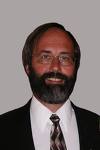Professor Gerald Gabrielse has been Professor of Physics at Harvard University since 1987. Currently Prof. Gabrielse leads the international ATRAP Collaboration whose goal is accurate laser spectroscopy with trapped antihydrogen atoms. Cold antiprotons and positrons have been confined simultaneously, and an interaction has been observed. The group’s nested Penning trap, invented and demonstrated at Harvard as a method for getting cold antiprotons and cold positrons to interact, is the crucial device that first permitted the observation of cold antihydrogen.
Gerald Gabrielse became a postdoctoral research fellow at the University of Washington in 1978, becoming Assistant Professor of Physics in 1985 and Associate Professor of Physics in 1986. He then left the University of Washington to become Professor of Physics at Harvard University in 1987. Professor Gabrielse has given about 330 invited talks at scientific conferences and university colloquia, and is the author of more than 125 scientific publications. He was awarded the Levenson Teaching Award for a senior faculty member at Harvard for his "Reality Physics" course for non-science students, and was awarded the 2002 Davisson-Germer Prize by the American Physical Society "for pioneering work in trapping, cooling, and precision measurements of the properties of matter and antimatter in ion traps."
Professor Gabrielse was named the George Vasmer Leverett Professor of Physics at Harvard University in 2003. In 2004, Professor Gabrielse was awarded the George Ledlie Prize by the President and Fellows of Harvard College for his "stunning" scientific accomplishment of creating and observing antimatter. The Ledlie Prize is awarded every two years to someone affiliated with the University who "since the last awarding of said prize has by research, discovery or otherwise made the most valuable contribution to science, or in any way for the benefit of mankind." In 2005, he received the Alexander von Humboldt Research Award from Germany for "Fundamental Studies of Cold Antiprotons and Antihydrogen".




